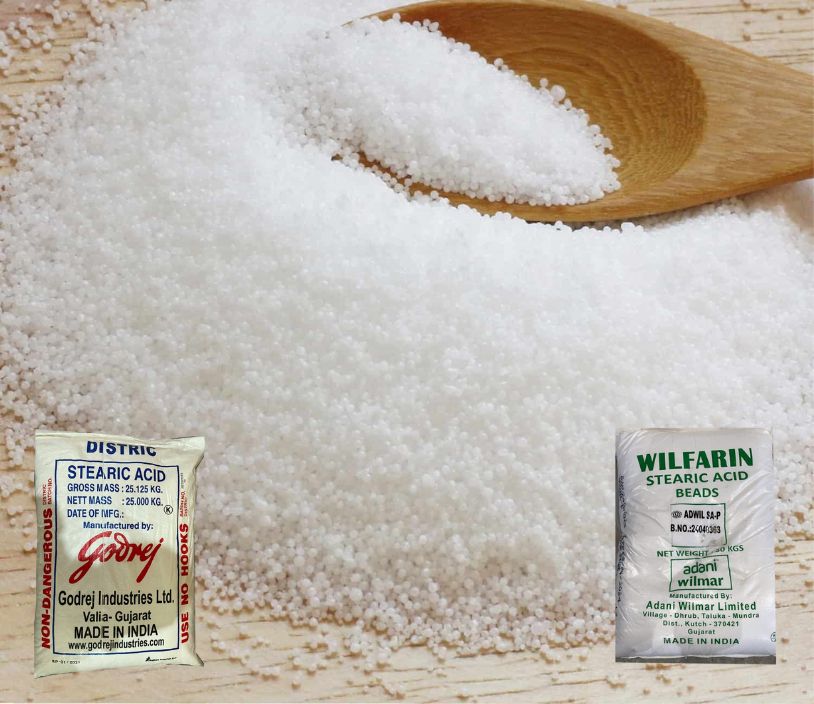
Stearic Acid
Stabilizer and lubricant that improves heat resistance during processing.
Specifications of Stearic Acid
- Chemical Name: Stearic Acid
- CAS Number: 57-11-4
- Molecular Weight: 284.48 g/mol
- Appearance: White, waxy solid or flakes
- Melting Point: Approximately 69.6 °C (157.3 °F)
- Boiling Point: 361 °C (682 °F)
- Density: About 0.9 g/cm³ at 20 °C
- Solubility: Insoluble in water; soluble in organic solvents like ethanol and ether. These specifications are crucial for determining the suitability of Stearic for various applications.
Stearic Acid is a saturated fatty acid with the chemical formula C18H36O2. It is derived from natural sources such as palm oil or animal fats. The specifications for Stearic typically include:
Applications of Stearic Acid
- Cosmetics and Personal Care Products: Used as an emulsifier and thickening agent in creams, lotions, and other personal care products.
- Food Industry: Serves as a food additive (E570) to improve texture and stability in products like margarine and confectionery.
- Pharmaceuticals: Acts as a lubricant in tablet formulations and as an excipient in drug delivery systems.
- Plastics Industry: Utilized as a processing aid in the production of PVC and other plastics to enhance flow properties.
- Industrial Applications: Employed in the manufacture of candles, soaps, lubricants, and rubber products. The versatility of Stearic makes it valuable across these sectors.
Stearic Acid has a wide range of applications across various industries due to its properties as a surfactant, emulsifier, and lubricant:
Safety Data Sheets (SDS) for Stearic Acid
- Hazard Identification:
- First Aid Measures:
- Firefighting Measures:
- Handling and Storage Recommendations:
Safety Data Sheets provide essential information regarding the handling, storage, and potential hazards associated with Stearic Acid:
Not classified as hazardous under OSHA regulations.
May cause mild irritation upon contact with skin or eyes.
In case of skin contact, wash thoroughly with soap and water.
If eye contact occurs, rinse cautiously with water for several minutes.
Use appropriate extinguishing media such as foam or dry chemical powder.
Avoid using water jets which may spread the fire.
Store in a cool, dry place away from incompatible materials such as strong oxidizers.
Ensure proper ventilation when handling to minimize inhalation risks.
The SDS should be reviewed regularly to ensure compliance with local regulations and safety practices.
In conclusion, RV Prime Plast’s dealings with Stearic involve understanding its specifications for quality assurance, recognizing its diverse applications across multiple industries for effective utilization, and adhering to safety protocols outlined in the Safety Data Sheets to ensure safe handling practices.
Request A Call Back
For more information regarding our products and services, fill up the form our concern person will get back to you.



